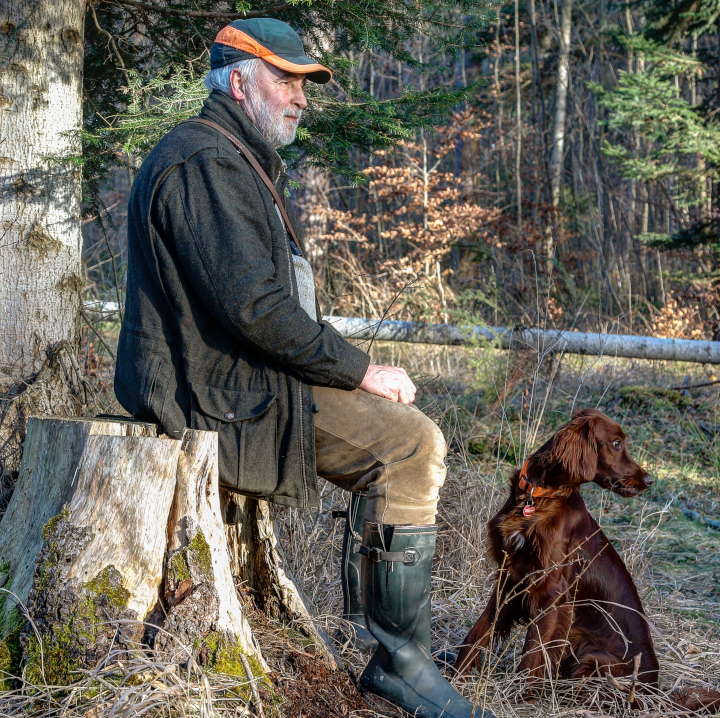
Linnea* and her husband, Gary*, enjoyed a full and active life, splitting their time between their home in Maple Grove and their lake house on the North Shore. That lifestyle hit a wall in December 2020 when Gary suffered a stroke. Almost overnight, this formerly independent man struggled to walk, speak, and swallow, lost the use of his left arm, became incontinent, and experienced mood changes.
Once Gary left the transitional care unit, Linnea, a retired schoolteacher, became his full-time caregiver. In addition to taking her husband to PT, OT, and speech therapy three days a week, she was getting up every night to walk him to the bathroom, often needing to change the sheets and help him into clean pajamas. Because of his mobility issues, she couldn’t leave him alone for any length of time, day or night.
Triage for caregiver burnout
Linnea was referred to Lifespark COMPLETETM, a program which gave the couple access to a dedicated Life Manager and a home-based advanced practice provider. However, given Gary’s complex medical needs, in-home primary care would have to wait.
When Linda Brixius, RN, Lifespark Life Manager, met the couple, it was immediately clear to her that Linnea was reaching a breaking point. “One of the first things I did was convince her not to stay for her husband’s three-hour therapy sessions,” Linda said. “I suggested she bring him to the clinic, check him in, and then leave to give herself some solo time—meet a friend for coffee, do an errand, or go home and rest.” Linnea finally had some time for herself.
The nighttime disruptions were also adding to her exhaustion. To help Linnea get the sleep she needed to take care of her husband during the day, Linda suggested a bedside commode and urinal so he wouldn’t have to walk to the bathroom at night. “I also encouraged her to sleep in the guest room, something I don’t think she would have done on her own,” she said.
Adjusting to changes
In the middle of all this, Linnea was struggling with changes in Gary’s personality. “They weren’t necessarily bad or good, but their relationship was different now, and that felt like a big loss,” Linda said. “During several visits, we talked about her trying an antidepressant, and once she did, it made a big difference for her.”
Linda also connected the couple with a stroke survivors support group. It was more helpful for Gary than Linnea, but she stuck with it until Linda found her a support group just for caregivers of stroke survivors.
Tools, ideas, and support
Gary continued to make progress in his therapies but was still having trouble swallowing. To keep him from losing more weight, Linda created a list of high-calorie foods, like liquid protein shakes, that would be easier for him to swallow. She also showed him how to use various adaptive utensils and devices to increase his independence at home and lighten Linnea’s load.
In spite of his progress, Gary would often get frustrated with himself, his anger escalating into arguments with his wife. To help them defuse this dynamic, Linda suggested they consider couples counseling. Finally, after what felt like eons of COVID-related delays, they started seeing a therapist on a monthly basis. After a few sessions, Linda recommended they try to see her twice a month. She also suggested that the counselor reach out to Gary’s occupational therapist to get a better understanding of his deficits and changes in his thought processes.
Outside the comfort zones
Last November, Gary told his wife that he desperately wanted to go deer hunting. “She didn’t think it was a good idea, but I gave him the okay as long as we put certain safety protocols in place,” Linda said. First and foremost, their grandson would need to be with him the entire time and never leave him alone holding a gun; second, Gary had to stay behind a blind to keep him relatively warm; and third, to compensate for his left-hand weakness, they would need to prop up a sandbag for him to rest his gun while aiming.
Everyone signed off on Linda’s protocols and the hunting trip went off without a hitch. “Gary had a great time, and Linnea was at peace, knowing her husband was doing what he wanted but still safe,” she said.
Taking stock of their progress
Gary still goes to PT, OT, and speech therapy and he’s recovering very well, Linda said. In addition to maintaining his weight, he’s regained significant use of his left arm and he’s no longer incontinent. His progress has also given Linnea more breathing space. She’s now willing to leave him for a few hours to join a group of teacher friends for lunch or machine quilting, and with the help of her kids who bring their dad to stay with them for a few days, she even goes up to the cabin to host longer quilting retreats.
Linda is thrilled with what the couple has accomplished these past 20 months. “You don’t see it when you’re in the middle of it, but when the three of us sat down to review the progress they’d made, we were all amazed. Linnea turned to me and said, ‘And you’ve been a big part of it,’” she said. “Maybe, but they’ve done all the hard work.”
To learn how Lifespark COMPLETE can help you or a loved one live a fuller, more independent life, contact us at 952-873-7386 or LSCreferrals@lifespark.com.
*Names have been changed to protect client privacy.


